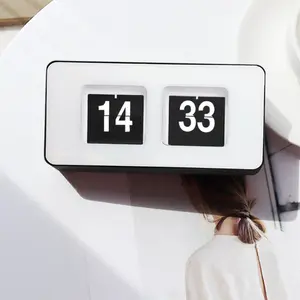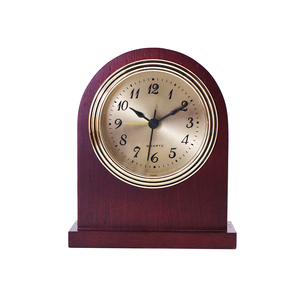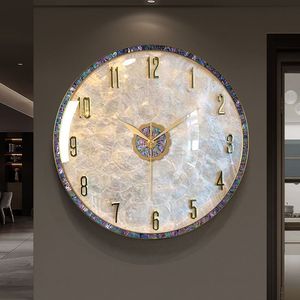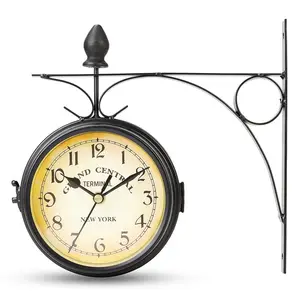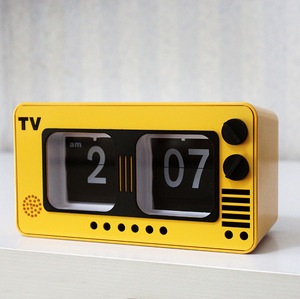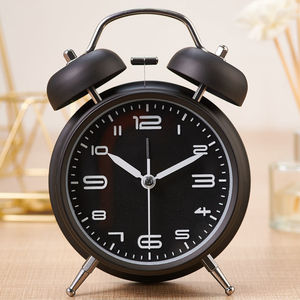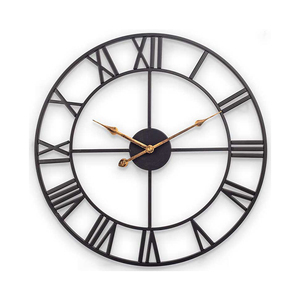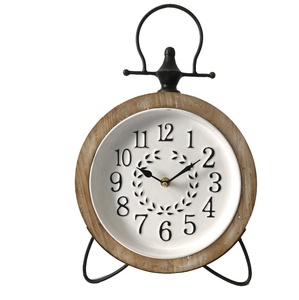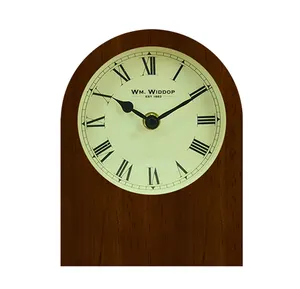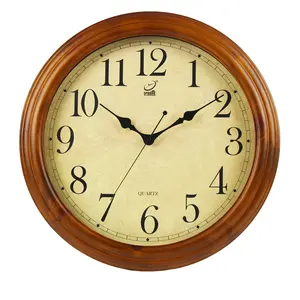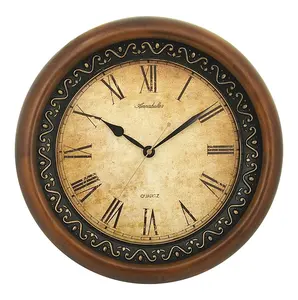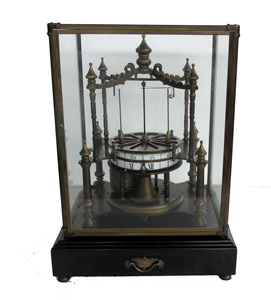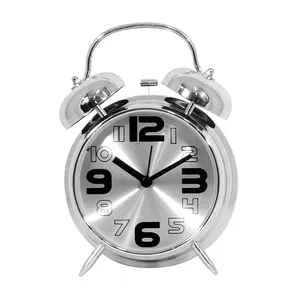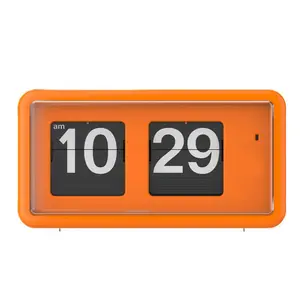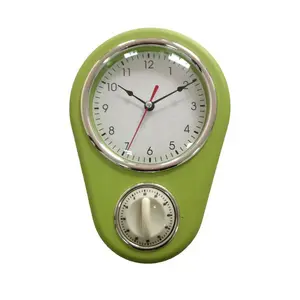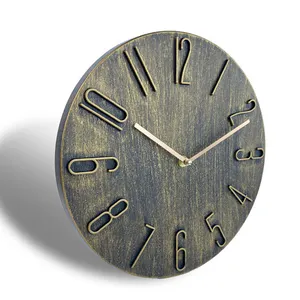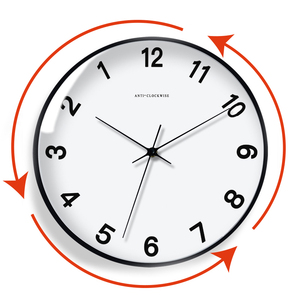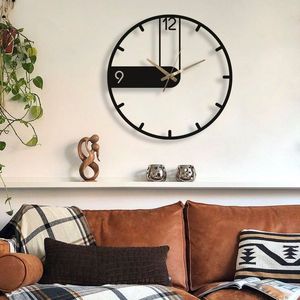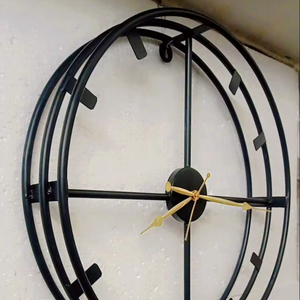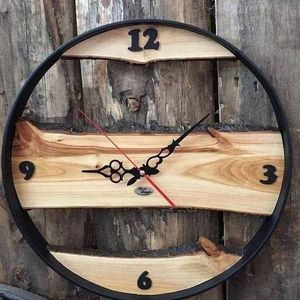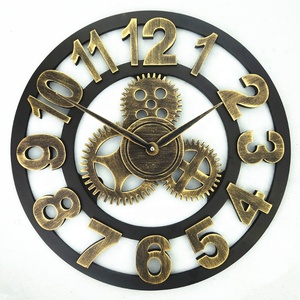Retro Clock Producer
























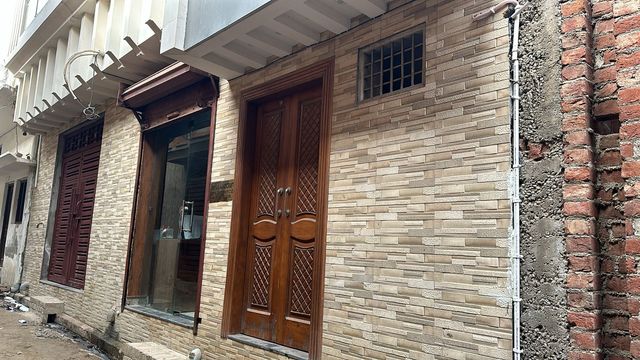

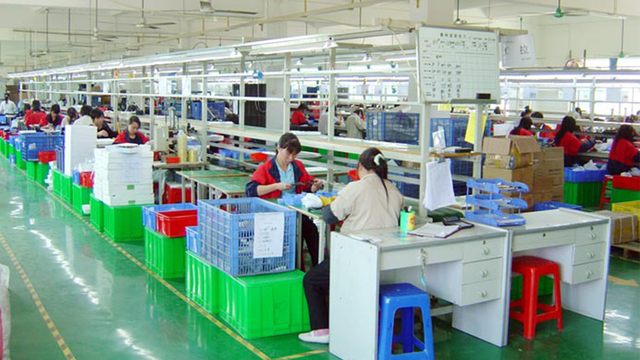





About retro clock producer
Where to Find Retro Clock Producers?
China remains the global epicenter for retro clock manufacturing, with specialized production clusters in Fujian, Guangdong, and Zhejiang provinces driving cost efficiency and design innovation. Fujian-based suppliers, such as Xiamen and Zhangzhou manufacturers, focus on high-volume quartz movement assembly and metal stamping, enabling scalable output of retro-styled wall and table clocks. Dongguan and Guangzhou facilities in Guangdong leverage integrated hardware and electronics supply chains to produce premium industrial and steampunk-style designs using wrought iron, wood composites, and vintage-finish coatings.
These regional ecosystems support vertically integrated production—from die-casting and painting to final assembly—reducing component procurement lead times by up to 40%. Suppliers commonly operate dedicated retro clock lines with monthly capacities exceeding 50,000 units, supported by localized access to quartz movements, clock faces, and packaging materials. Buyers benefit from competitive pricing (as low as $0.60/unit at scale), short development cycles for new molds, and flexible order structuring across multiple product categories including wall, desk, and novelty clocks.
How to Choose Retro Clock Producers?
Implement structured evaluation criteria to identify reliable manufacturing partners:
Production Infrastructure Verification
Confirm ownership of in-house production lines through facility documentation or video audits. Key indicators include CNC machining for metal components, automated quartz movement calibration stations, and surface treatment capabilities (powder coating, antique plating). Prioritize suppliers listing 100+ SKUs in retro or vintage clock categories, indicating established design libraries and tooling investments.
Quality & Compliance Benchmarks
While formal ISO certification is not explicitly stated in available data, consistent on-time delivery rates (≥95%) and transaction volume serve as proxy indicators of operational maturity. For EU and North American markets, ensure compliance with RoHS and REACH regulations for paint and metal finishes. Request sample testing for timekeeping accuracy (±20 seconds/month for quartz mechanisms) and durability under temperature variation (0–50°C).
Order Flexibility & Customization Capacity
Evaluate minimum order quantities (MOQs) relative to demand forecasts:
- High-volume producers: MOQs of 500–3,000 units, prices from $0.60–$3.00/unit
- Mid-tier suppliers: MOQs of 100–500 units, prices from $2.50–$7.00/unit
- Premium/niche manufacturers: MOQs as low as 1–5 units, prices up to $40+/unit for artisanal wooden or gear-driven models
Customization options frequently include color, material (metal, wood, plastic), size, logo imprinting, packaging, and graphic design modifications. Confirm digital proofing availability before production runs.
What Are the Leading Retro Clock Producers?
| Company Name | Location | Main Products (Listings) | Online Revenue | On-Time Delivery | Avg. Response | Reorder Rate | Notable Capabilities |
|---|---|---|---|---|---|---|---|
| Xiamen Nox Electronics Co., Ltd. | Fujian, CN | Wall Clocks, Desk Clocks, Alarm Clocks | US $10,000+ | 92% | ≤4h | <15% | Customization (color, logo, packaging); double-bell alarm models |
| Dongguan Heng-Rong Hardware Electronic Technology Co., Ltd. | Guangdong, CN | Wall Clocks (303), Antique Style Clocks | US $80,000+ | 95% | ≤4h | <15% | Industrial/steampunk designs; large wooden and shell wall clocks |
| Zhangzhou Uniq Electronic Co., Ltd. | Fujian, CN | Wall Clocks (235), Desk Clocks | US $10,000+ | 100% | ≤4h | <15% | Plastic and iron retro quartz clocks; high-volume production |
| Fujian Reida Precision Co., Ltd. | Fujian, CN | Wall Clocks (192), Digital-Analog Clocks | US $10,000+ | 100% | ≤2h | 20% | In-house quartz movements; rustic and vintage customization |
| Guangzhou Holiker Industrial Co., Ltd. | Guangdong, CN | Wall Clocks (367), Floor Clocks | US $2,000+ | 100% | ≤8h | <15% | Wooden cuckoo and flip clocks; large decorative models |
Performance Analysis
Dongguan Heng-Rong leads in product diversity and verified sales volume, offering access to luxury vintage and industrial designs with strong export experience. Fujian Reida stands out for responsiveness (≤2h average reply) and full production control over quartz movements, supporting deep customization. Zhangzhou Uniq and Guangzhou Holiker achieve perfect on-time delivery records, suggesting robust internal scheduling despite lower public revenue figures. Xiamen Nox provides balanced flexibility for mid-range orders with broad customization options. Buyers seeking niche aesthetics (e.g., steampunk, cuckoo, auto-flip) should prioritize suppliers with dedicated listings in those subcategories and request physical samples to validate finish quality.
FAQs
How to verify retro clock producer reliability?
Assess performance metrics such as on-time delivery rate (target ≥95%), response speed (ideally ≤4 hours), and transaction history. Request references or third-party inspection reports if ordering in bulk. Validate customization claims through prototype samples before scaling production.
What is the typical lead time for retro clock orders?
Standard production lead times range from 25–40 days after sample approval. Expedited orders may be fulfilled in 18–22 days depending on factory load. Add 7–15 days for international air freight or 25–40 days for sea shipping based on destination.
Can retro clock suppliers accommodate private labeling?
Yes, most suppliers listed offer OEM services including custom logos, packaging labels, and user manuals. Minimum order thresholds typically start at 100 units for branded variants, though some accept lower MOQs for simple engraving or sticker branding.
Do manufacturers provide free samples?
Sample policies vary: some suppliers offer paid samples ($5–$50) refundable against future orders, while others charge full cost. Free samples are rare but possible for high-potential buyers demonstrating long-term volume intent.
What materials are commonly used in retro clock production?
Primary materials include cold-rolled steel for metal casings, MDF or solid wood for vintage-style frames, ABS plastic for lightweight models, and tempered glass for premium dials. Surface treatments include electroplating, powder coating, distressing, and simulated patina finishes to achieve authentic retro aesthetics.







